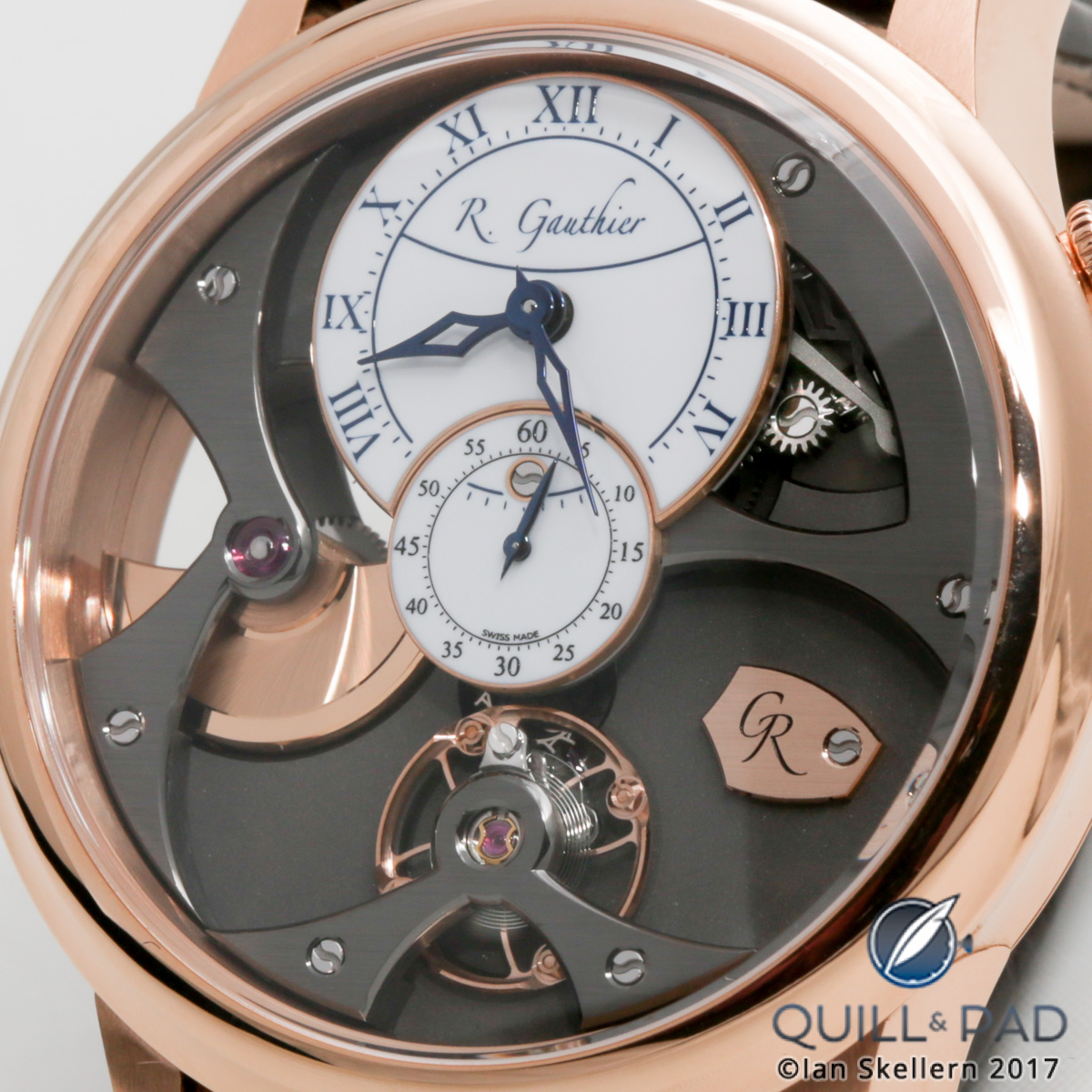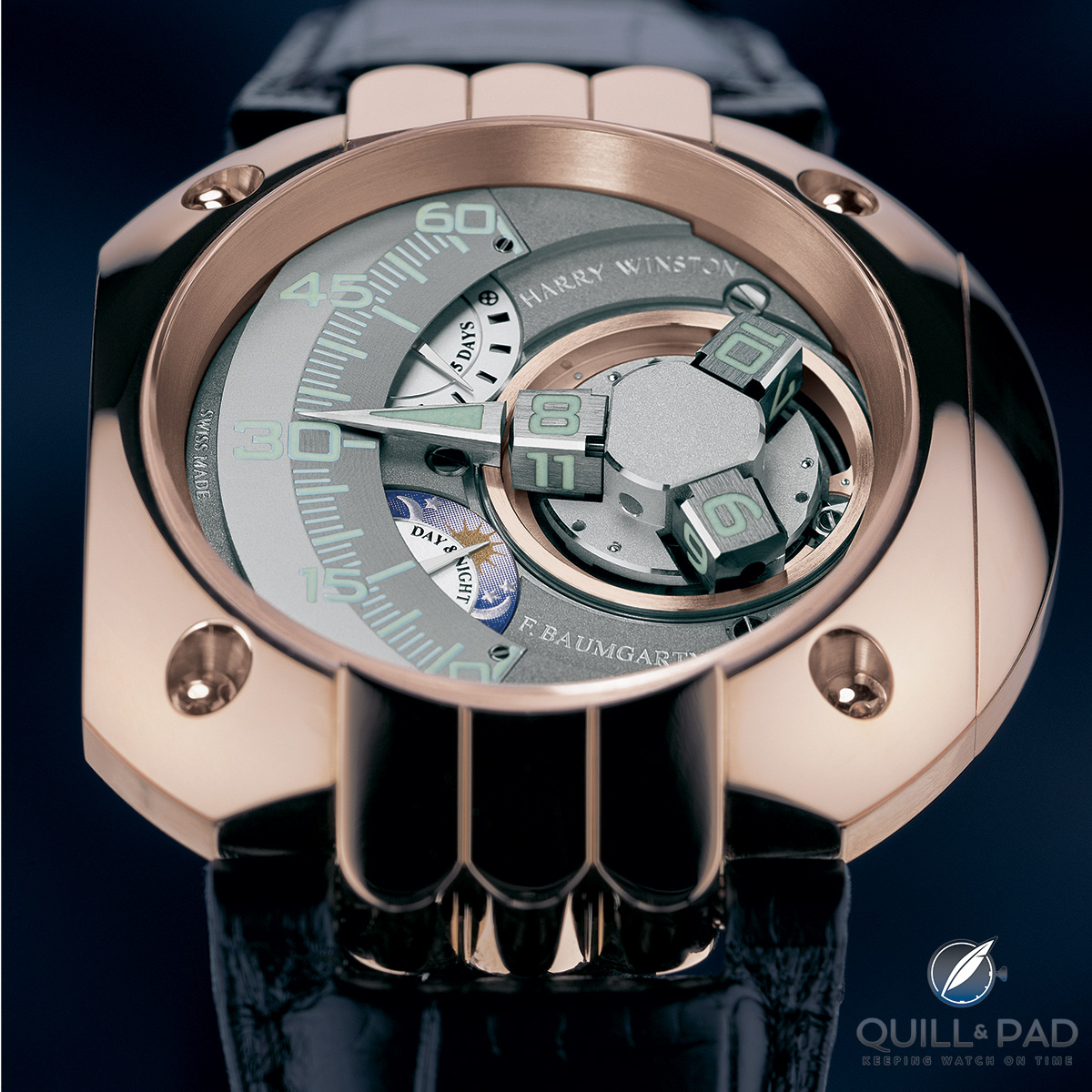
Back in 2005, I visited Baselworld in the pleasurable company of Max Hellicar (aka MaxH), a watch collector friend who had brought with him a portable 20x magnification stereo microscope. To put that magnifying power into some perspective, the usual range for a horological loupe is 6x to 10x.
Max’s microscope not only had twice the magnification of a strong loupe, the stereo effect offered incredible three-dimensionality, enabling unparalleled appreciation of perfectly finished movements and flawless dials, but it was devastatingly brutal in revealing the most minor of flaws.
In fact, over our few days of examining hundreds of watches, there were only two that stood out as having dials that were flawless under the microscope’s intense scrutiny. One was a Jaquet Droz with a black enamel dial, a fairly traditional watch by a brand with a pedigree spanning centuries; the other was the then (and now) absolutely wild Harry Winston Opus V by a young brand called Urwerk that had yet to celebrate its tenth birthday (see The Harry Winston Opus Series: A Complete Overview From Opus 1 Through Opus 13 and The Urwerk Opus 5 For Harry Winston That Almost Was).
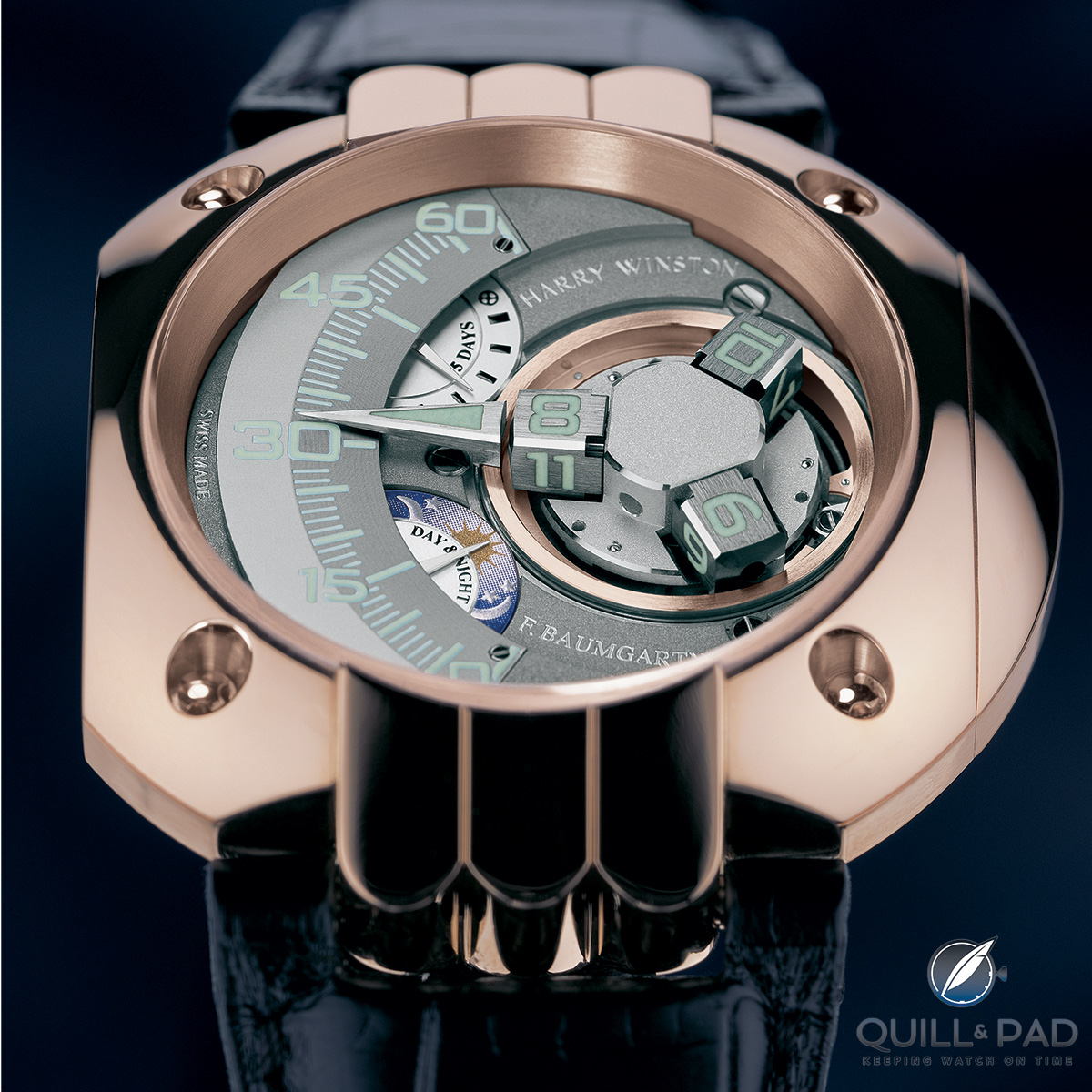
2005: Harry Winston Opus V by Urwerk
Under unforgiving optics, the Opus V not only blew me away by the audacity of its conception and engineering, but also in the incredible quality of its finishing, a quality of finishing that (in my mind, at least) at the time stood head and shoulders above the vast majority of its peers. It’s worth emphasizing here that I am referring to the visible finishing of the dial side components, not the movement.
This experience led me to decide to write a long article on Urwerk and the Opus V, so after the dust of Baselworld settled I arranged a meeting with Maximilian Büsser, who was then the CEO of the Harry Winston watches. After that fruitful discussion, I went to Felix Baumgartner. At that time, Urwerk consisted of Baumgartner and one other watchmaker, who were operating from a couple of benches in the workshops of Christian Gros, a small specialist case and component manufacture operating out of what, to my mind, was a brutal-looking Soviet-style building on the outskirts of Geneva.
When I mentioned to Baumgartner that I hoped he had a Plan B regarding bench space − atelier would be far too grand a word − because surely the charmless concrete building was at risk of being demolished, he replied, au contraire, that it had recently been listed as a heritage building to be preserved due to the building’s unusual communal ownership by its many small businesses.
My first interview with Baumgartner was supposed to take an hour or so but ran for nearly five hours, and even that had me coming away with so many more questions that I arranged a follow-up meeting that also ran for another half a day. And that was the start of a close relationship with Urwerk that has lasted until today.
For the full story on the beginnings of Urwerk and I, please see Felix Baumgartner, Urwerk, Harry Winston, And The Opus V: Where On Earth Did That Come From? Plus There’s A User Review Of the UR-103.03
Urwerk celebrates its twentieth anniversary in 2017
Watchmaker brothers Felix and Thomas Baumgartner and their friend, designer Martin Frei, launched Urwerk in 1997 with the difficult-to-imagine-anything-more-minimalist UR-101 (yellow gold) and UR-102 (stainless steel), which were the same watch housed in different case materials.
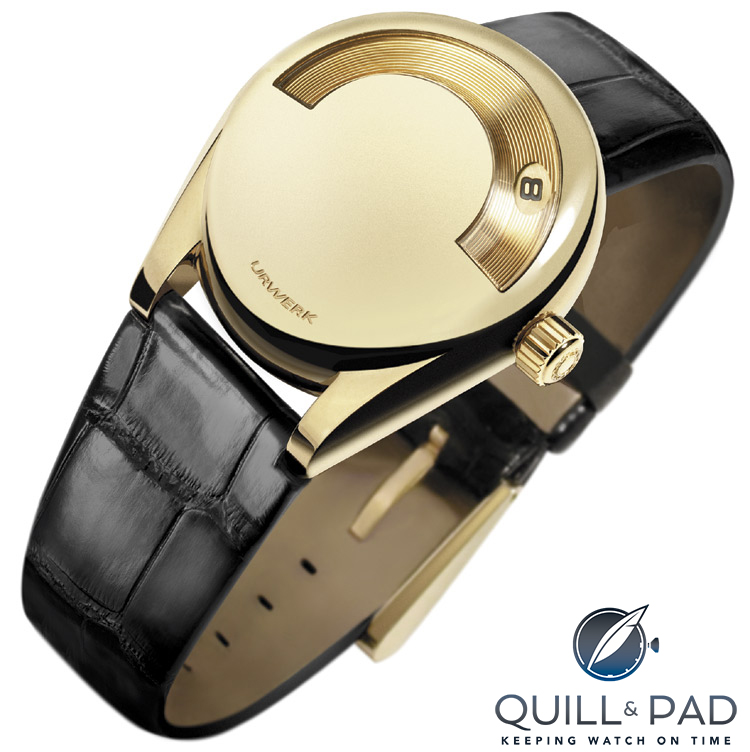
Urwerk UR-101 “Millennium Falcon”
They were heartened by the response on presenting their horological baby at the AHCI stand at Baselworld that year and overjoyed to sell a few pieces.
After this auspicious start, however, it was lucky the team kept their day jobs working part-time for other brands, as over subsequent years sales of Urwerk’s first watch might be best described as occasional and sporadic.
The biggest problem was that, as laughable as it is now in light of the wild contemporary watches developed by Urwerk as well as MB&F, HYT and De Bethune, the UR-101 was simply too far ahead of its time. For the vast majority of watch collectors, haute horlogerie was synonymous with traditional (aka “conservative”) horology. They just didn’t understand the philosophy of Urwerk at all.
Some respite looked promising in 2000 when Baumgartner was selected to participate in the Goldpfeil Seven Masters project, which might be viewed as an unsuccessful forerunner to the Harry Winston Opus Series.
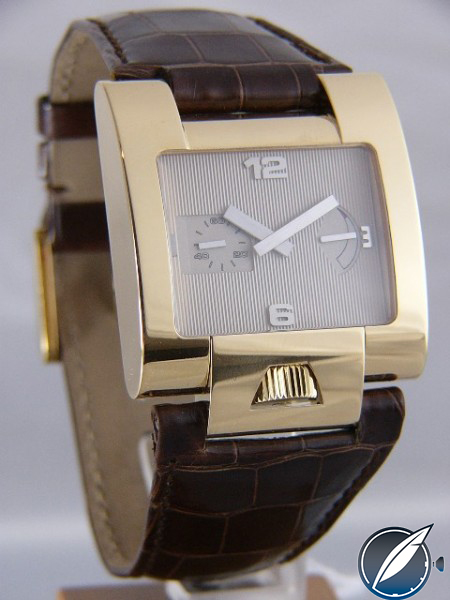
2001: Urwerk Chronometer for the Goldpfeil Seven Masters project
The German luxury leather goods manufacturer convinced seven AHCI members − Antoine Preziuso, Bernhard Lederer, Felix Baumgartner, Frank Jutzi, Svend Andersen, Vianney Halter, and Vincent Calabrese − to each create a watch that would be sold by Goldpfeil.
Unfortunately, while many watches were produced, Goldpfeil ran out of funding for the project, and many of the watchmakers involved were never paid.
At this stage Urwerk was financially struggling to make ends meet, and it appeared that the demise of the brand was imminent. Fortune rained however when Urwerk received a totally unexpected $100,000 payment from Goldpfeil (which the partners thought was by error) that made a big decision harder rather than easier: should the three partners split the earnings and walk away from Urwerk with some money in their pockets and the thought of having done their best or should they sink it into developing a completely new watch, one even more “out there” than the first, so even more likely not to be appreciated?
Let’s toss a coin
During a company meeting over a few beers the partners could not arrive at a clear consensus to either take the money and fold the company or risk it all on developing a new watch. The decision was made to toss a coin, best of three.
The best-of-three coin toss favored closing Urwerk.
Somebody said, “Best of five?”
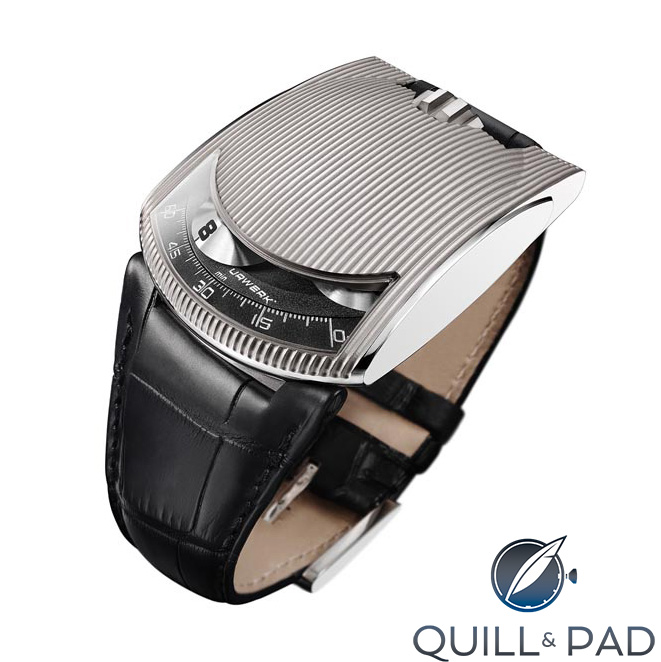
2003: UR-103
And the result is history. Urwerk developed the UR-103, which was presented at Baselworld 2003 and led to Büsser offering the young brand the Opus V.
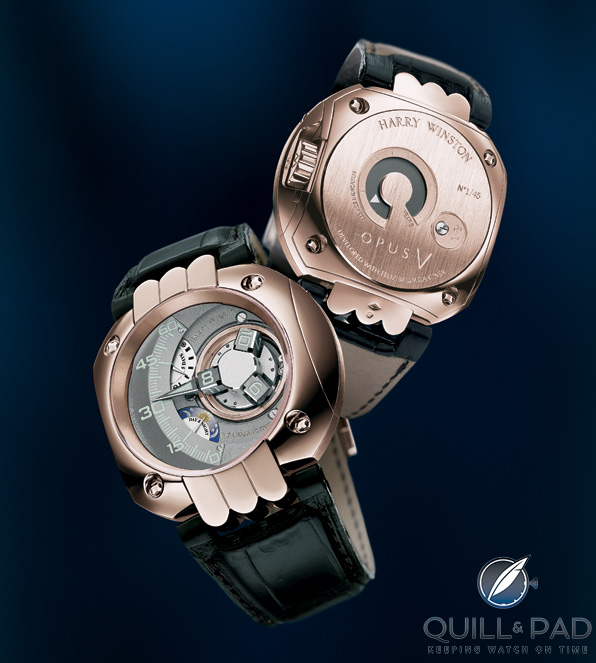
Opus 5 by Felix Baumgartner/Urwerk for Harry Winston
Harry Winston launched the Opus V in 2005, and it was widely acknowledged then, as now, as one of the − if not THE − best Opus ever made.
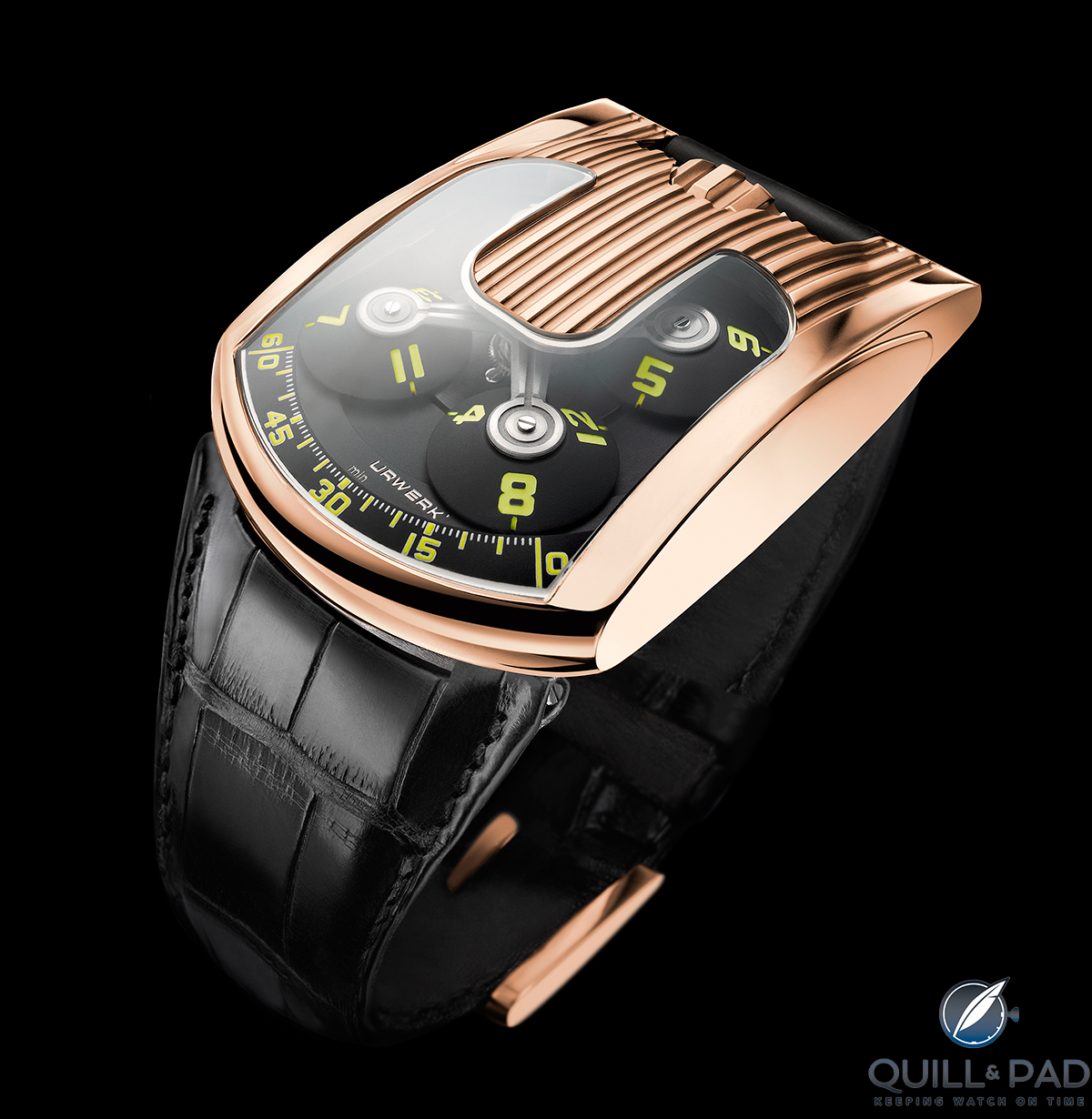
2005: UR-103.03
At the same time the Opus V was launched, Urwerk presented a sensational Targa-type version of the UR-103 called the UR-103.03, which was really the model that set the company on the road to success.
That initial success might have been started by the Opus V and UR-103.03, but has only continued over the subsequent decade and beyond by the regular development and release of a constant stream of groundbreaking timepieces.
Urwerk has been a significant influence on the wave of popularity for contemporary brands including MB&F, HYT, Hautlence, and many more.
Urwerk 1997 to 2017
Here is a selection of the incredible timepieces Urwerk has created.
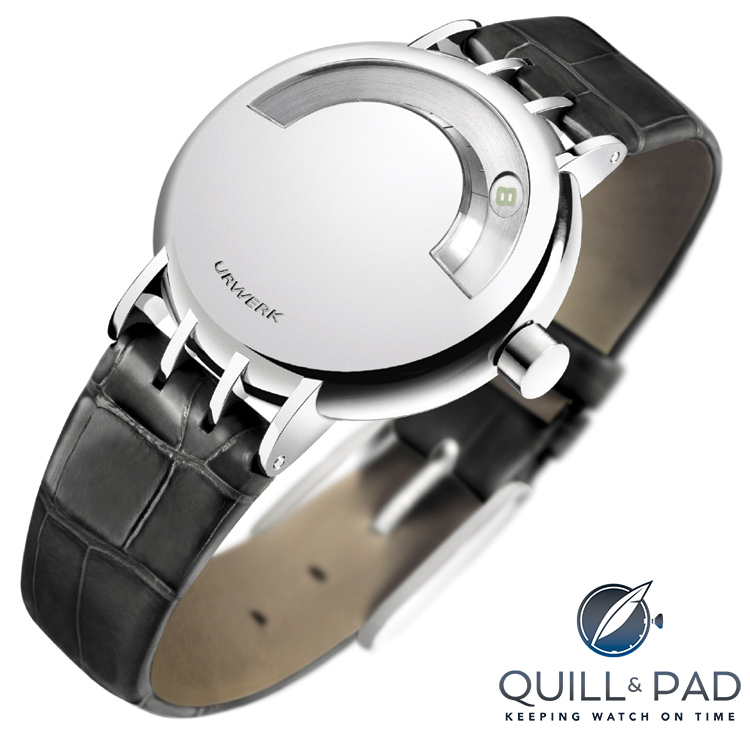
1997: Urwerk UR-102 “Sputnik”
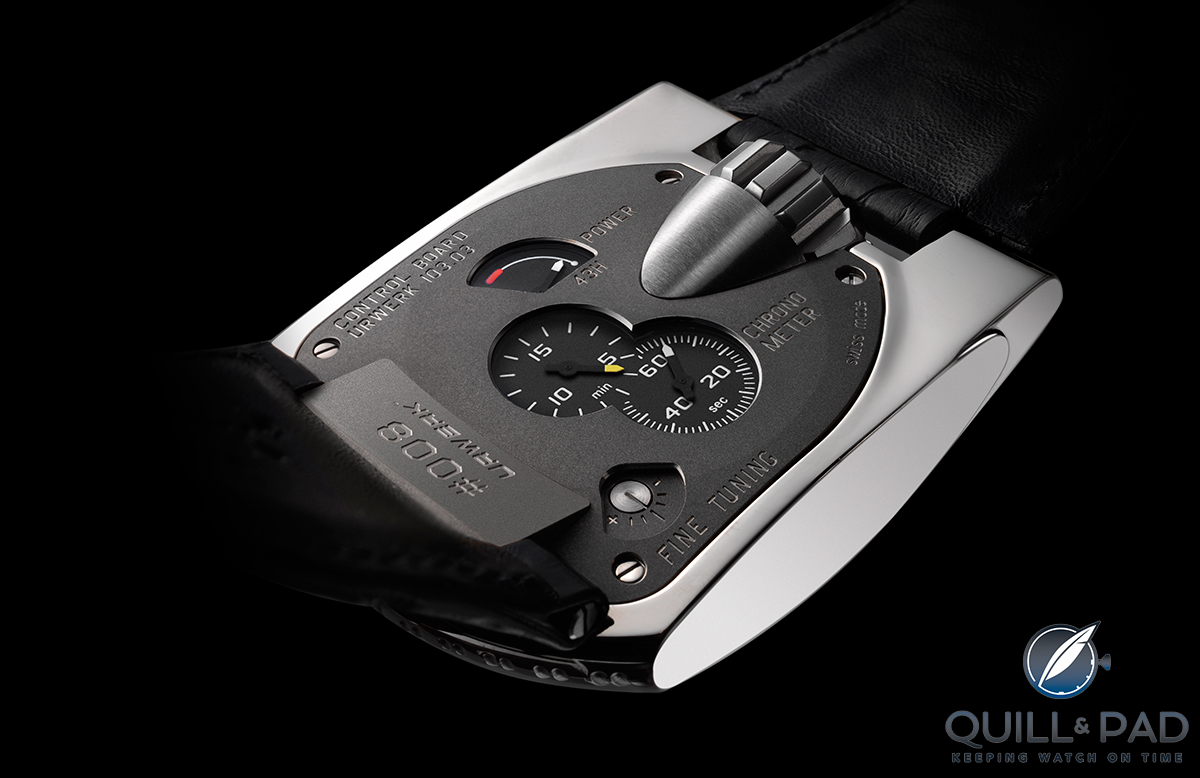
2003: Control board of the UR-103
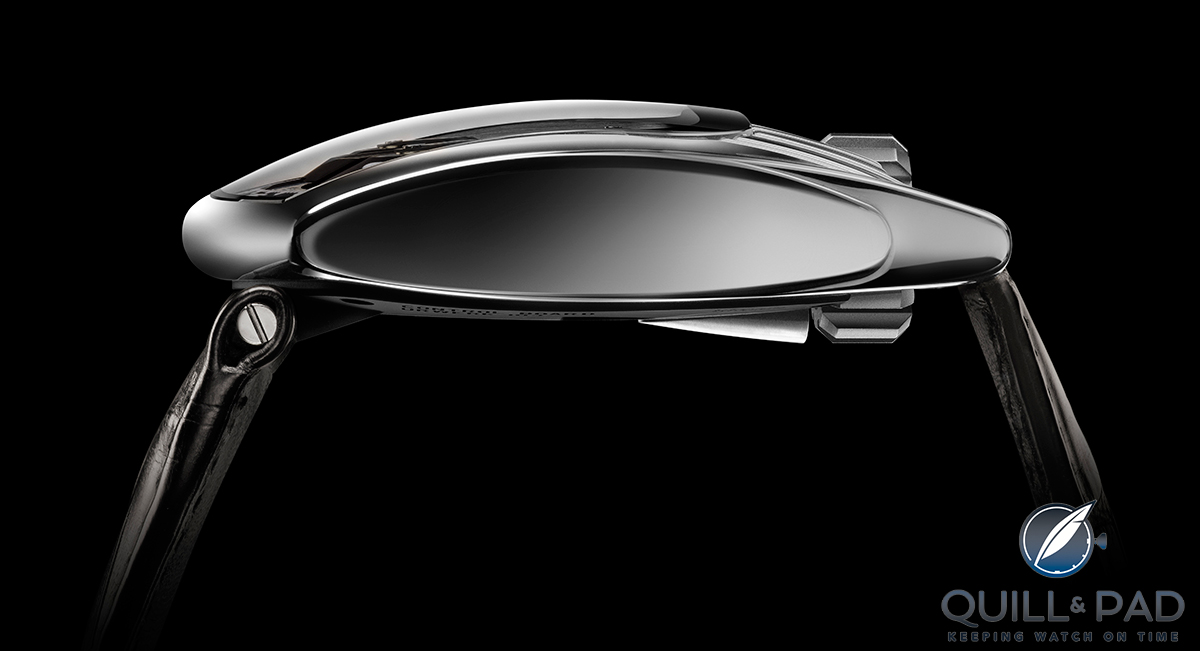
2009: The timeless sublime profile of the UR-103T
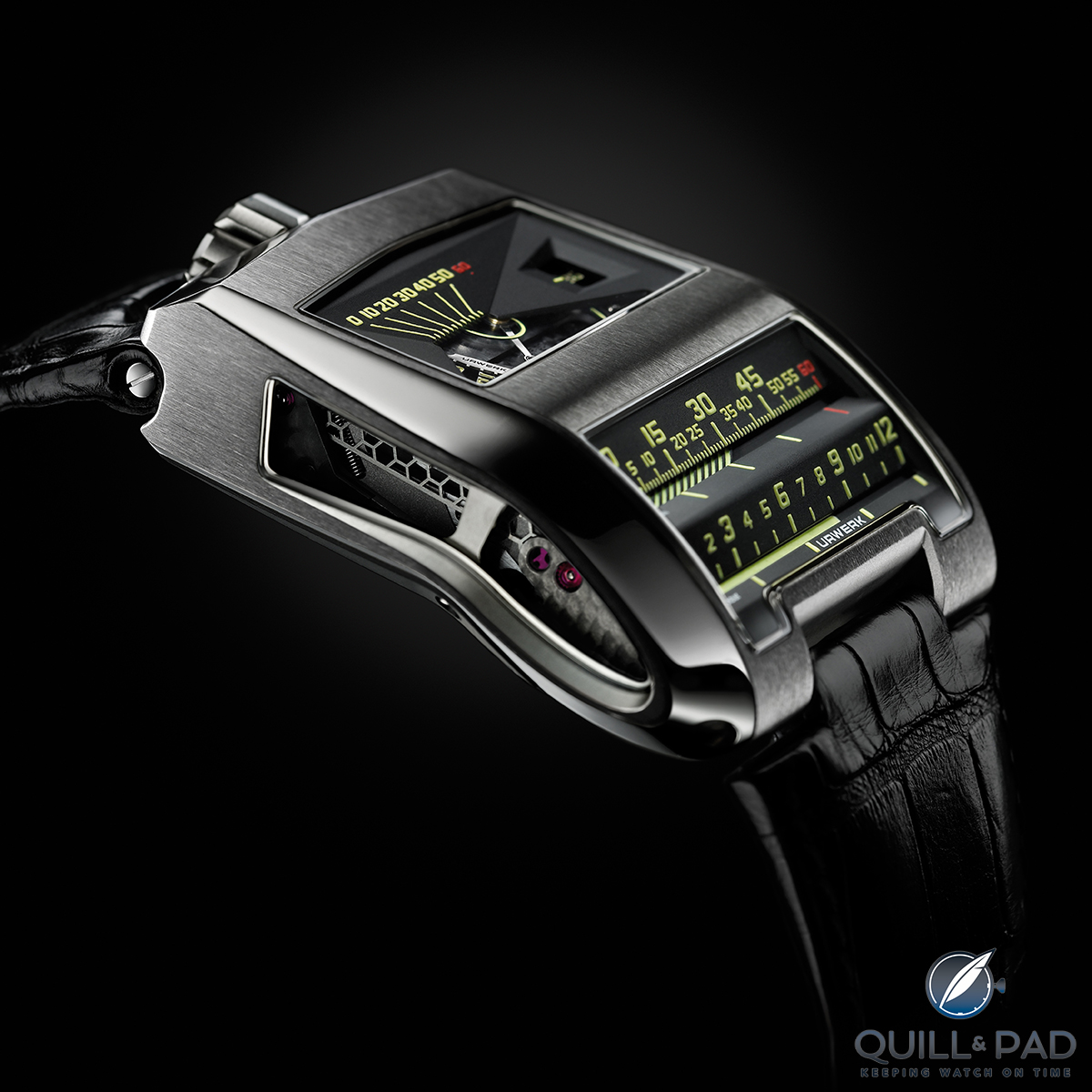
2009: UR-CC1
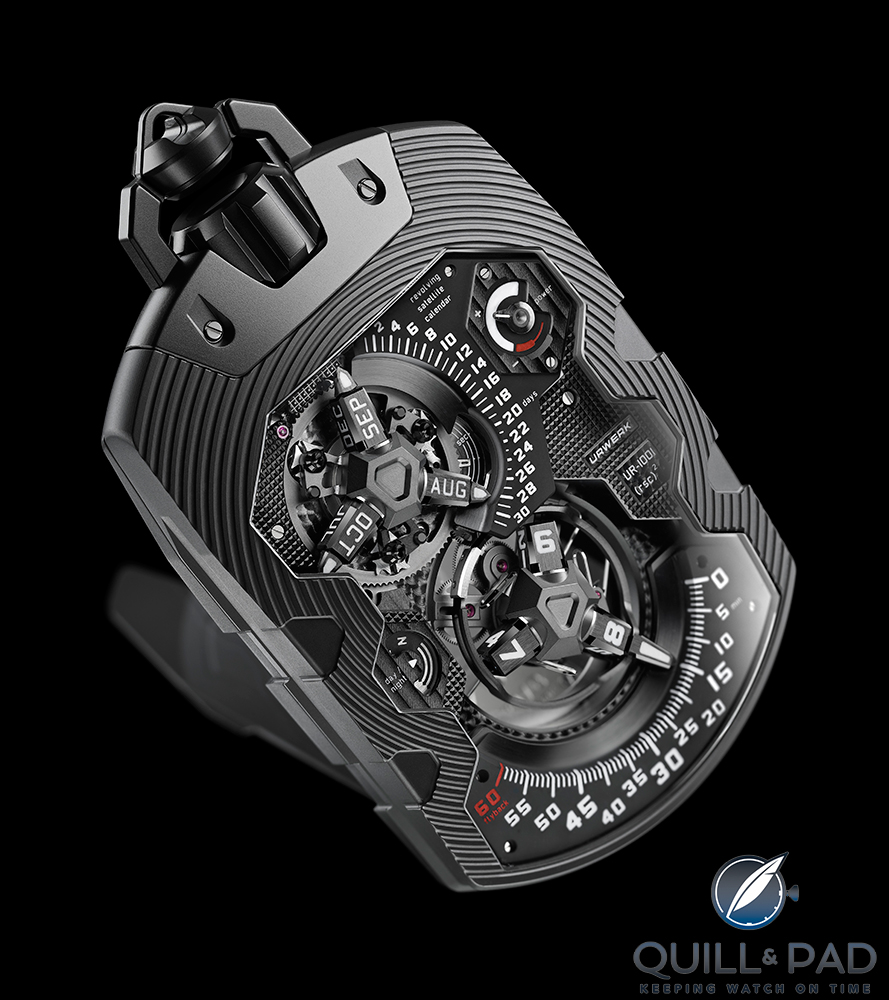
2011: Urwerk UR-1001 Zeit Device
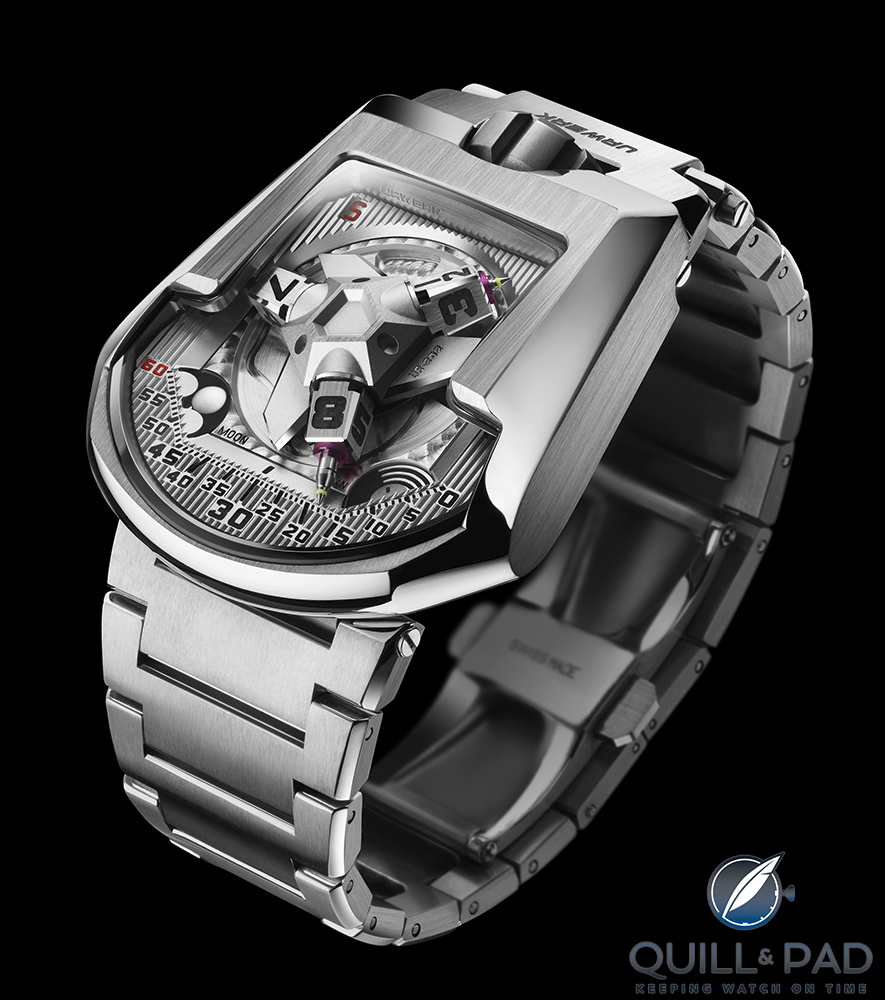
2011: UR-202S Full Metal Jacket
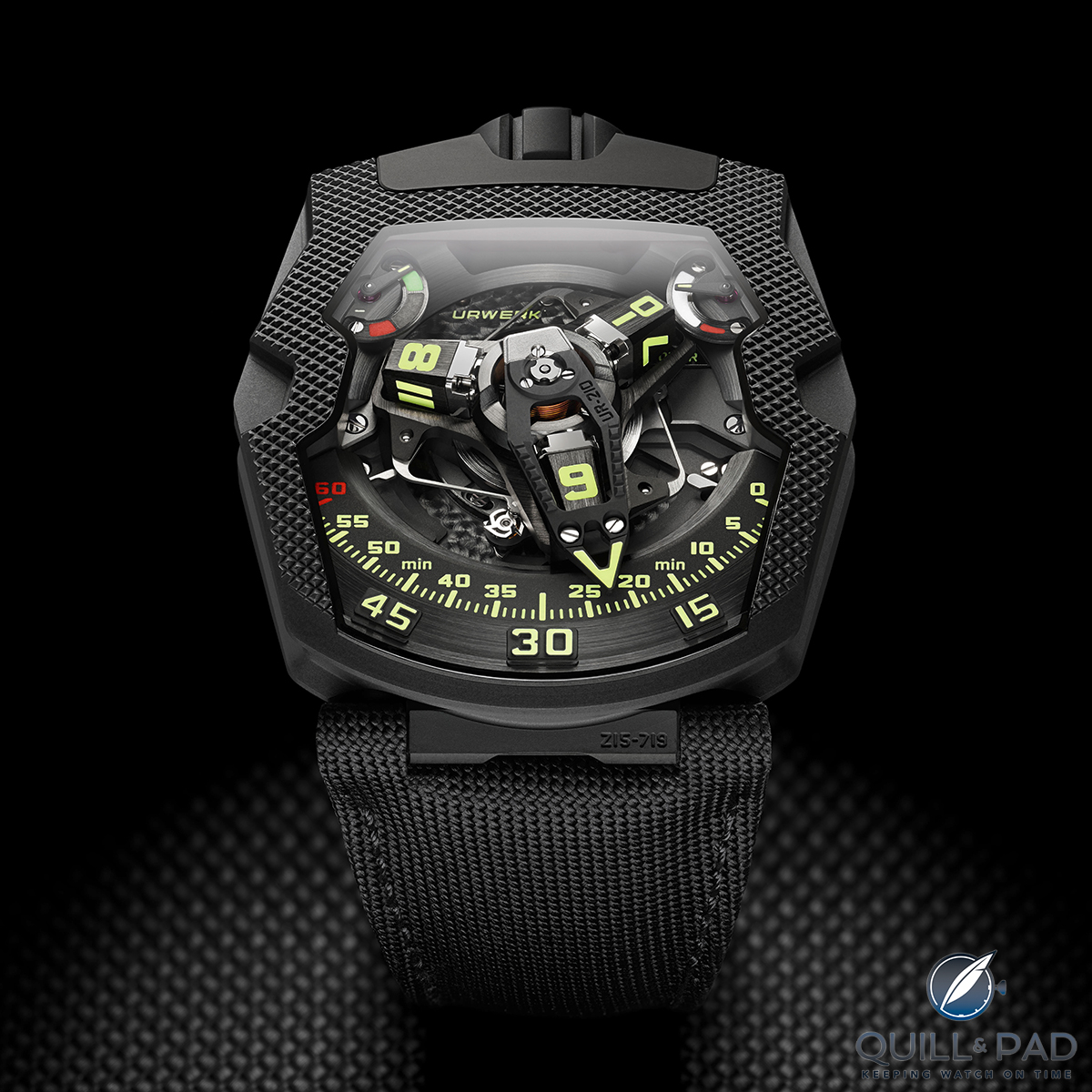
2012: UR-210
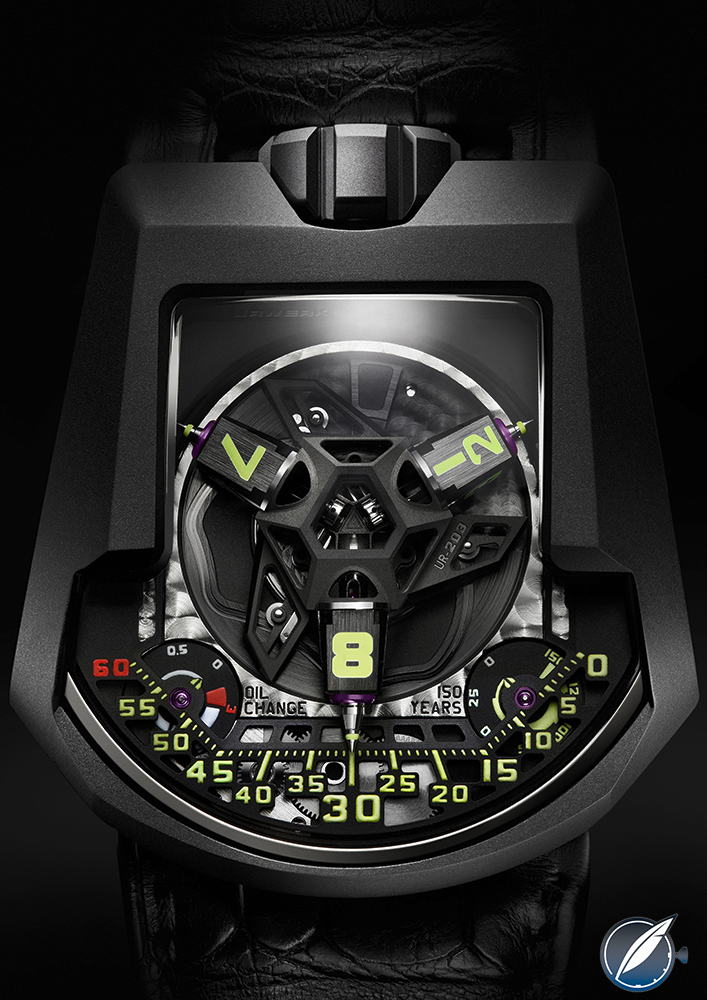
2013: UR-203, the first watch encased in blackened platinum
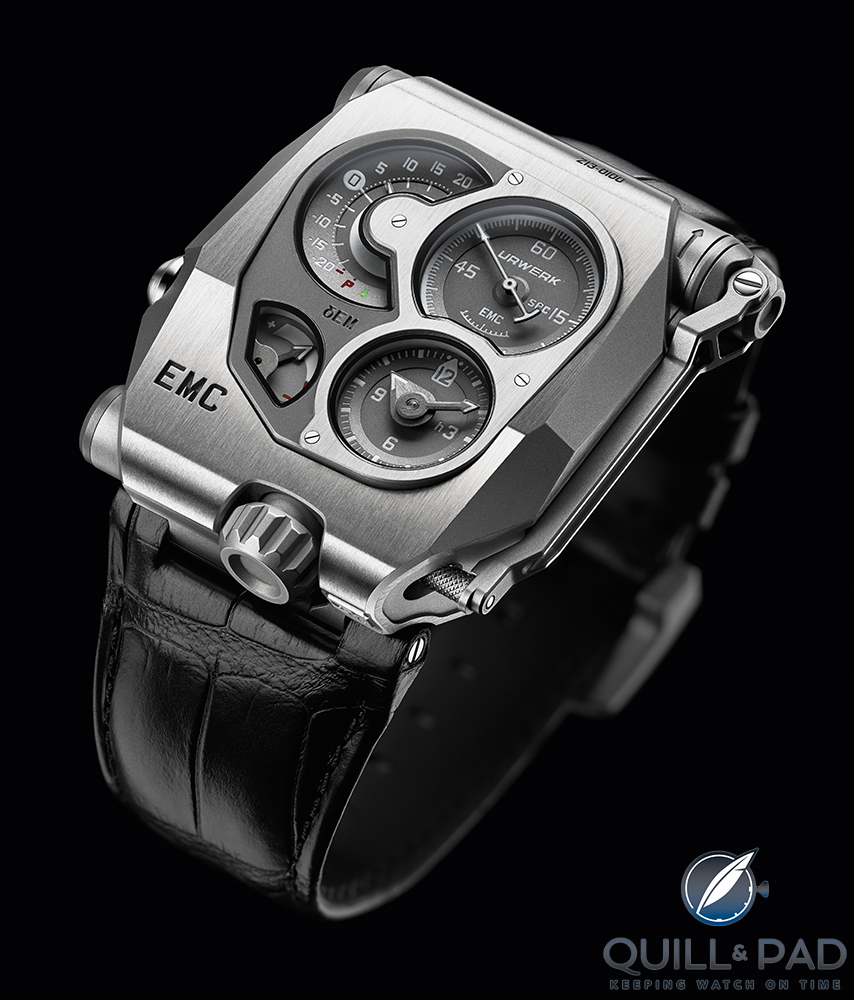
2013: EMC
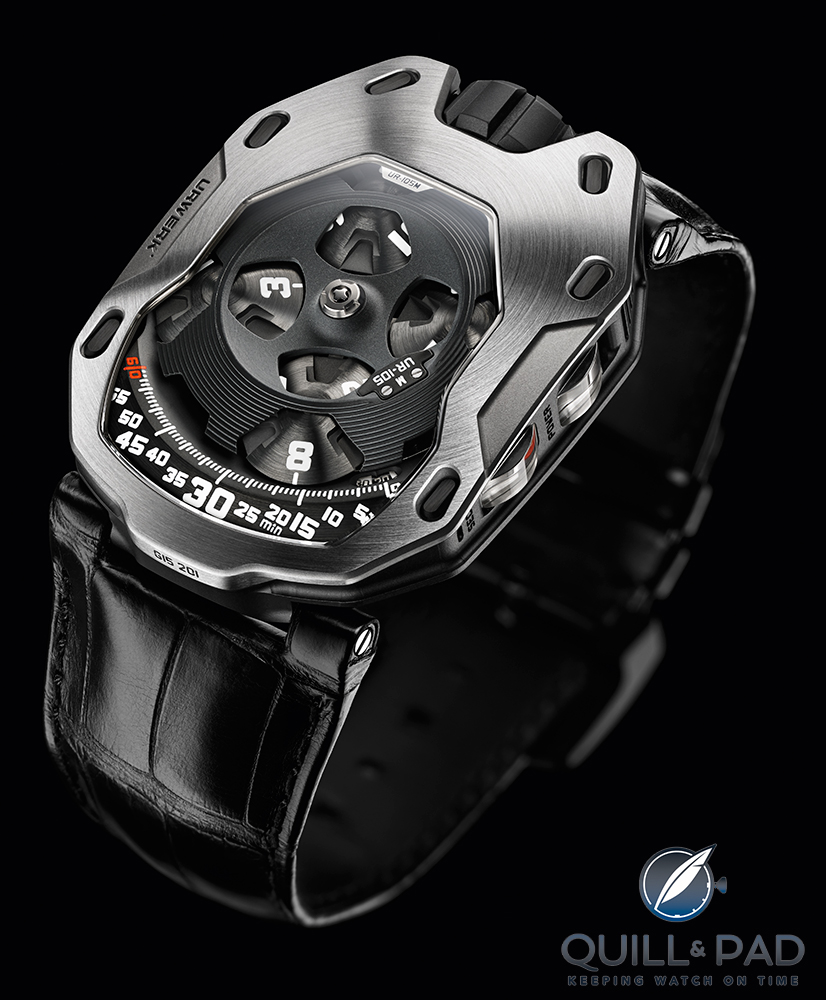
2014: Urwerk UR-105M Iron Knight
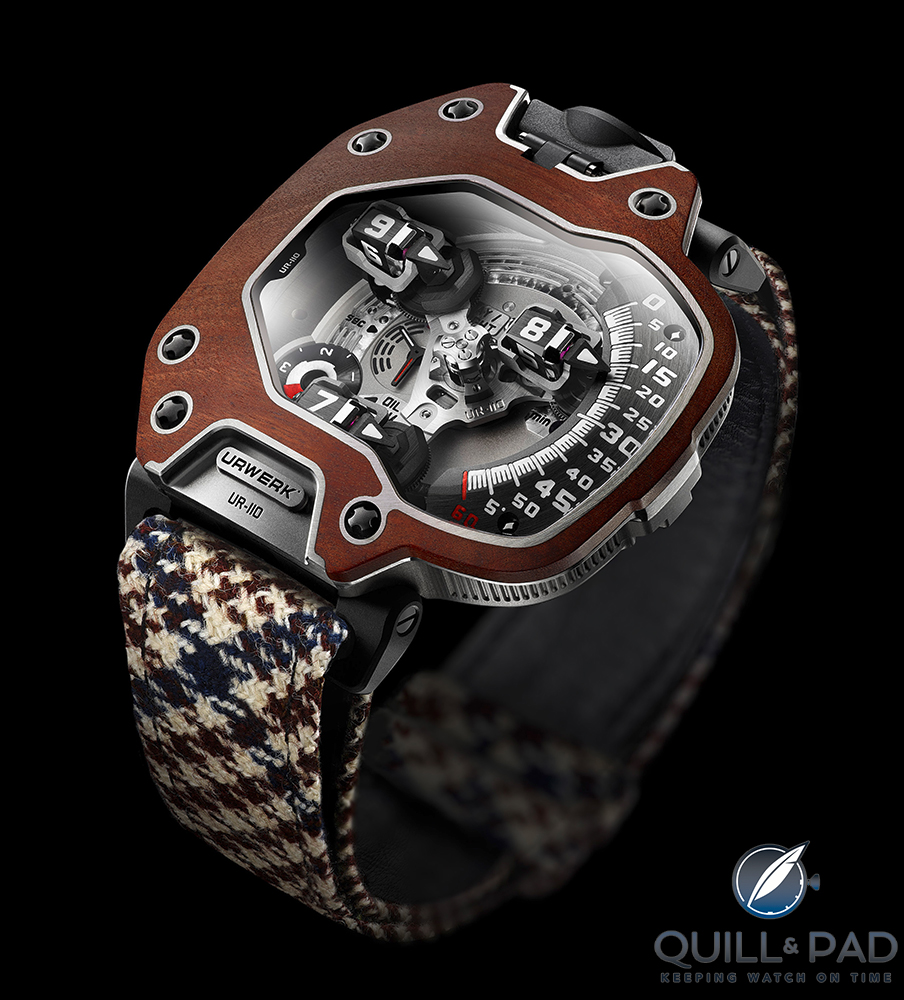
2015: UR-110 Red Ebony
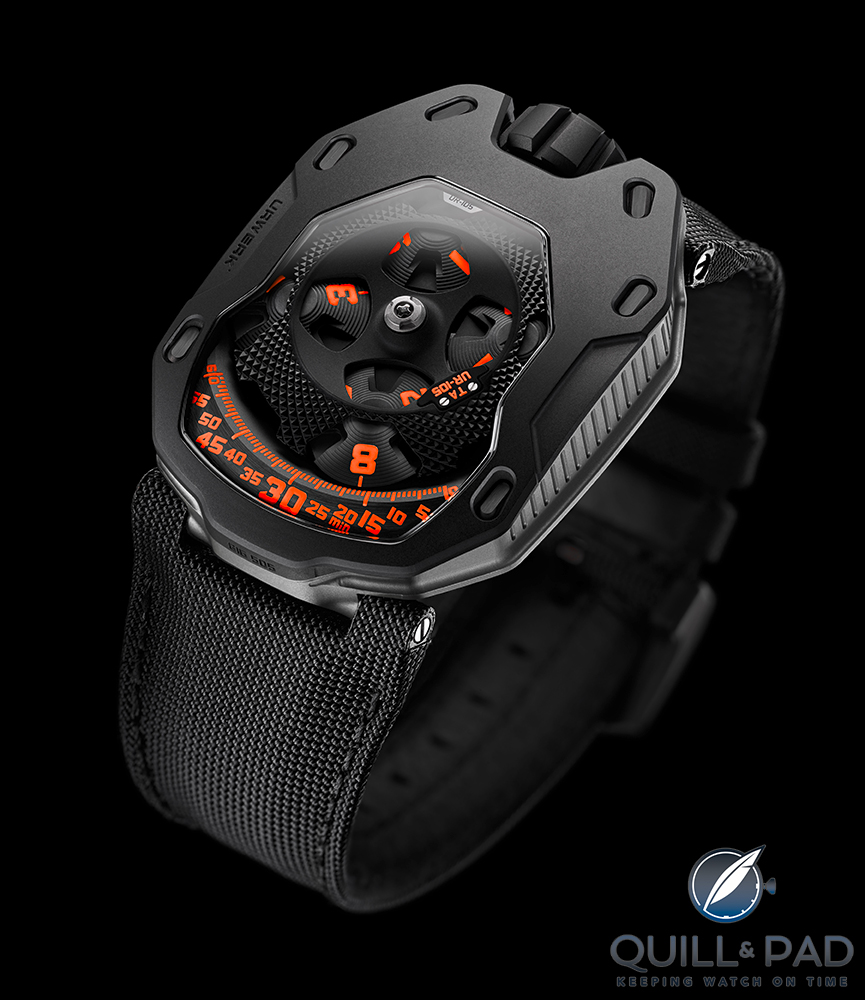
2016: Urwerk UR-105TA Clockwork Orange
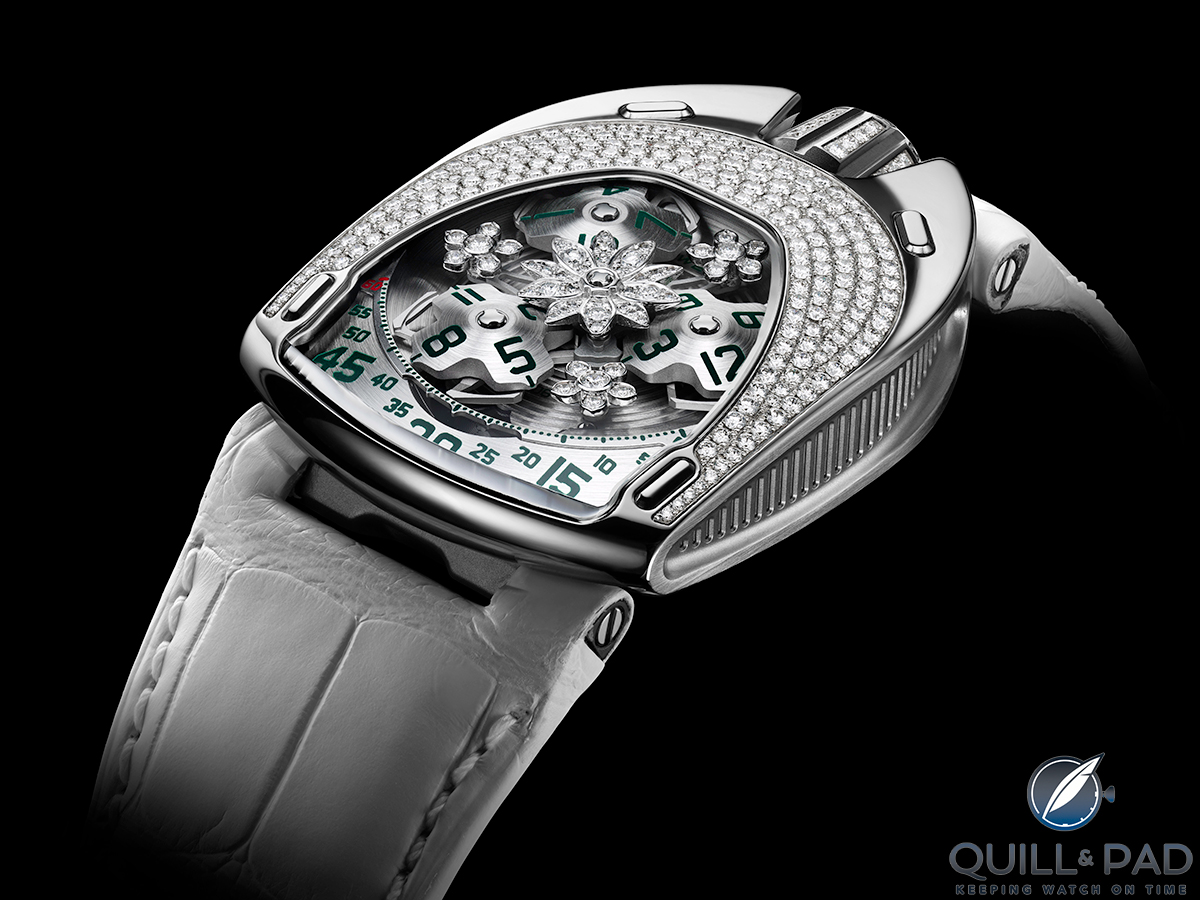
2017: UR-106 Flower Power
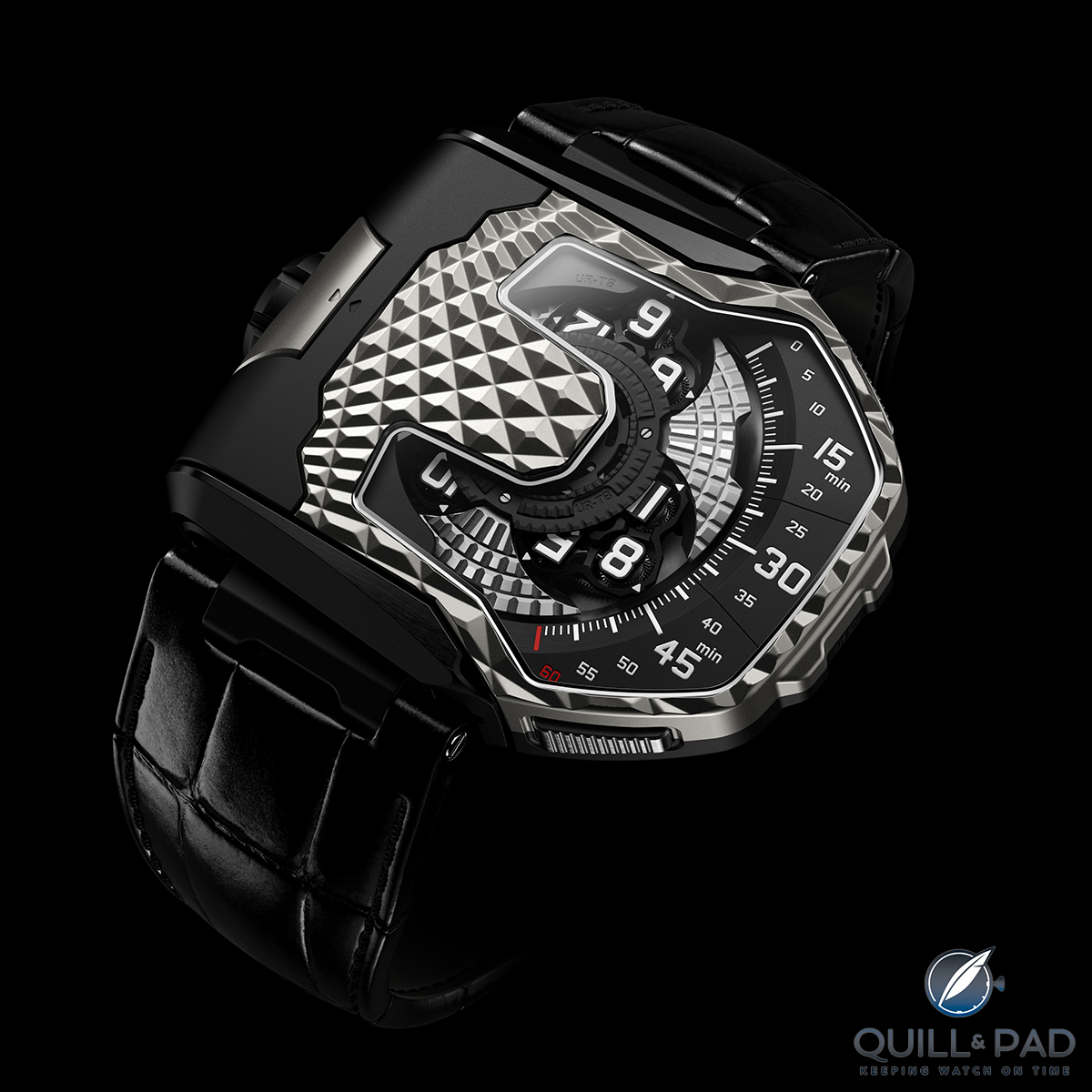
2017: Urwerk UR-T8 bicolor
The year 2017 signals a milestone for Urwerk as the brand is planning to wind down its focus on exploring the world of timepieces with revolving satellite-type complications and indications and start developing a new generation of watches with a completely different approach to telling time.
For Urwerk, time never stands still and after surprising us so often in the past, the brand has its sights on even more surprises in the future.
One thing is certain: the next 20 years of Urwerk are as likely to be even more creative as the last 20 years, and I for one am impatient to learn what’s in store. Especially when I think back to that wondrous day in 2005 when I met this brand for the very first time.
You may also enjoy Felix Baumgartner, Urwerk, Harry Winston, And The Opus V: Where On Earth Did That Come From? Plus There’s A User Review Of the UR-103.03.
For more information, please visit www.urwerk.com.

